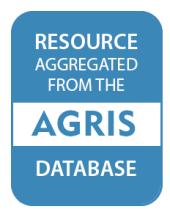/ library resources
Showing items 14050 through 14058 of 73602.The availability of spatially continuous data layers can have a strong impact on selection of land units for conservation purposes. The suitability of ecological conditions for sustaining the targets of conservation is an important consideration in evaluating candidate conservation sites.
Satellite-based estimates of the fire radiative power (FRP) and energy (FRE) emitted from open biomass burning are affected by the spatiotemporal resolution of polar-orbiting and geostationary sensors.
The influence of social others in private landowner decision-making has received limited attention despite growing support for peer-to-peer learning and landowner cooperative behavior.
The Northern Eurasian land mass encompasses a diverse array of land cover types including tundra, boreal forest, wetlands, semi-arid steppe, and agricultural land use.
Rain-use efficiency (RUE; the ratio of vegetation productivity to annual precipitation) has been suggested as a measure for assessing land degradation in arid/semi-arid areas.
The goal of this study is to propose a new classification of African ecosystems based on an 8-year analysis of Normalized Difference Vegetation Index (NDVI) data sets from SPOT/VEGETATION. We develop two methods of classification.
Pagination
Land Library Search
Through our robust search engine, you can search for any item of the over 64,800 highly curated resources in the Land Library.
If you would like to find an overview of what is possible, feel free to peruse the Search Guide.

